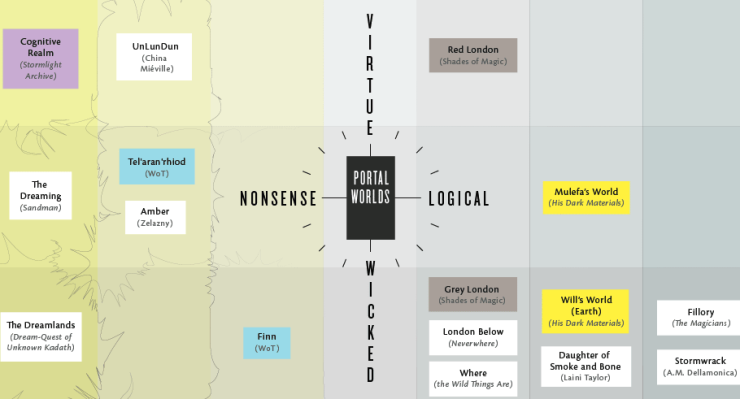Seanan McGuire’s new book Every Heart a Doorway explores how to deal with real life once the portal to your own personal magical world has closed. It also gives readers a rough guideline for how all of these different portal worlds–like Narnia, Oz, Wonderland, and so on–relate to each other. From the book:
Here in the so-called “real world” you have north, south, east, and west, right? Those don’t work for the most of the portal worlds we’ve been able to catalog. So we use other words. Nonsense, Logic, Wickedness, and Virtue. There are smaller sub-directions, little branches, but those four are the big ones. Most worlds are either high Nonsense OR high Logic, and then they have some degree of Wickedness or Virtue built into their foundations from there. A surprising number of Nonsense worlds are Virtuous. It’s like they can’t work up the attention span necessary for anything more vicious than a little mild naughtiness.
We saw that and wondered…could we use Every Heart‘s guidelines to map ALL of the different portal worlds in fiction into a single multiverse?
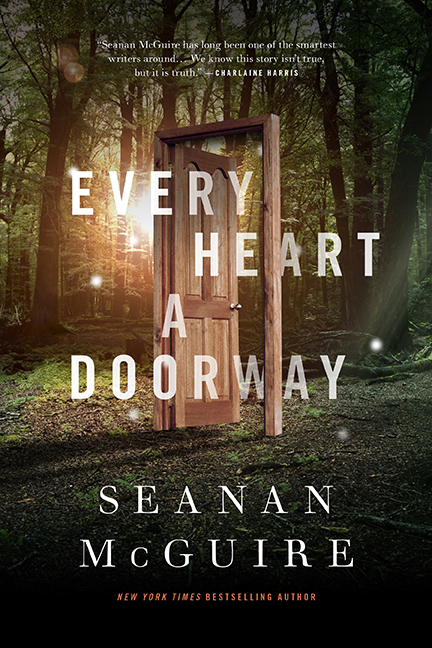 It took some doing. “Portal worlds” are only as knowable as their author/creator allows them to be and the aspects of some of them change over the course of the story in which they are featured. In addition, the four main axes–nonsense, logic, wickedness, and virtue–are themselves subjective on a personal and cultural level: One person’s estimation of High Virtue can easily be another person’s estimation of Wickedness.
It took some doing. “Portal worlds” are only as knowable as their author/creator allows them to be and the aspects of some of them change over the course of the story in which they are featured. In addition, the four main axes–nonsense, logic, wickedness, and virtue–are themselves subjective on a personal and cultural level: One person’s estimation of High Virtue can easily be another person’s estimation of Wickedness.
Thankfully, McGuire’s Every Heart gives us a few different portal worlds that serve as examples of various degrees of the aspects known as nonsense, logic, wickedness, and virtue. With these in hand, we were able to form subjective gradations that could encompass all of the guidelines and examples presented by McGuire, allowing us to place all magical portal worlds into a precise grid (our “multiverse”) while remaining generalized enough to allow those worlds to move around the grid without conflict.
Here’s How The Grid Works:
y axis = Virtue 3, 2, 1, 0, 1, 2, 3 Wickedness
x axis = Nonsense 3, 2, 1, 0, 1, 2, 3 Logic
The below grid has two axes based on the four Aspects noted in Every Heart.
The y axis (up and down) starts in the north with High Virtue. Worlds become less virtuous the further south on the axis you go, until they’re High Wicked. There are three gradations of Virtue and three gradations of Wicked, with a null (zero) state in between them. This means our portal world multiverse is 7 rows tall.
The x axis (right and left) starts in the west with High Nonsense. Worlds become more logical as you head east, until they’re High Logic. There are three gradations of Nonsense and three gradations of Logic with a null (zero) state in between them. This means our portal world multiverse is 7 columns wide.
How Nonsense Is Your Favorite World?
It’s one thing to say that Eleanor’s portal world in Every Heart is “Nonsense 2” but what does that mean? Here’s how we’re defining the three gradations of every Aspect:
- Nonsense 3 = Environment completely pliable and redefinable. Change motivated by personal whim. Near-chaos. Examples include: The Dreaming from Neil Gaiman’s Sandman.
- Nonsense 2 = World on the tipping point between fantastical chaos and realistic environments. Examples include: Oz.
- Nonsense 1 = Reality is pliable through wish fulfillment, but cause and effect actions are still most effective. Examples include: Neverland from the Peter Pan tales.
- Nonsense/Logic 0 = Stasis, no change occurs in world.
- Logic 1 = Most things follow rules of cause-and-effect but there is still doubt as to how many things follow rules. Examples include: Lyra’s world from The Golden Compass.
- Logic 2 = Everything can be explained eventually, but there will always be unique exceptions. Examples include: Our own world!
- Logic 3 = Everything can be explained, no exceptions to rules. Examples include: Narnia, and most any other world where its god/creator has a direct influence.
How Virtuous Is Your Favorite World?
- Virtue 3 = Pure and providential, world provides everything you need. Is in an “ideal” state. Examples include: Narnia once Aslan’s control is restored.
- Virtue 2 = Overriding harmony in world, active championing of human/being rights, but still threatened. Examples include: L. Frank Baum’s Oz, after the Wicked Witch and Wizard are taken out of power.
- Virtue 1 = World provides for its denizens but in a limited capacity, passive promotion of human/being rights. Could be seen as only slightly better than our own world. Examples include: UnLunDun, from China Mieville’s book of the same name.
- Virtue/Wicked 0 = Balance between virtuous and wicked desires, but not harmony. Examples include: The Dreaming from Neil Gaiman’s Sandman.
- Wicked 1 = Unbalanced. Passive or secondary limiting of human/being rights. Examples include: Our own world!
- Wicked 2 = Overriding disharmony. Active limiting of its denizens. “Crapsack World” but livable. Examples include: Narnia when the White Witch is in power.
- Wicked 3 = Actively malevolent, apocalyptic, near-unredeemable, near-unlivable. Examples include: The Dark Tower.
OMG Just Let Me See the Grid Already
Here you go! Design credit goes to Jamie Stafford-Hill.
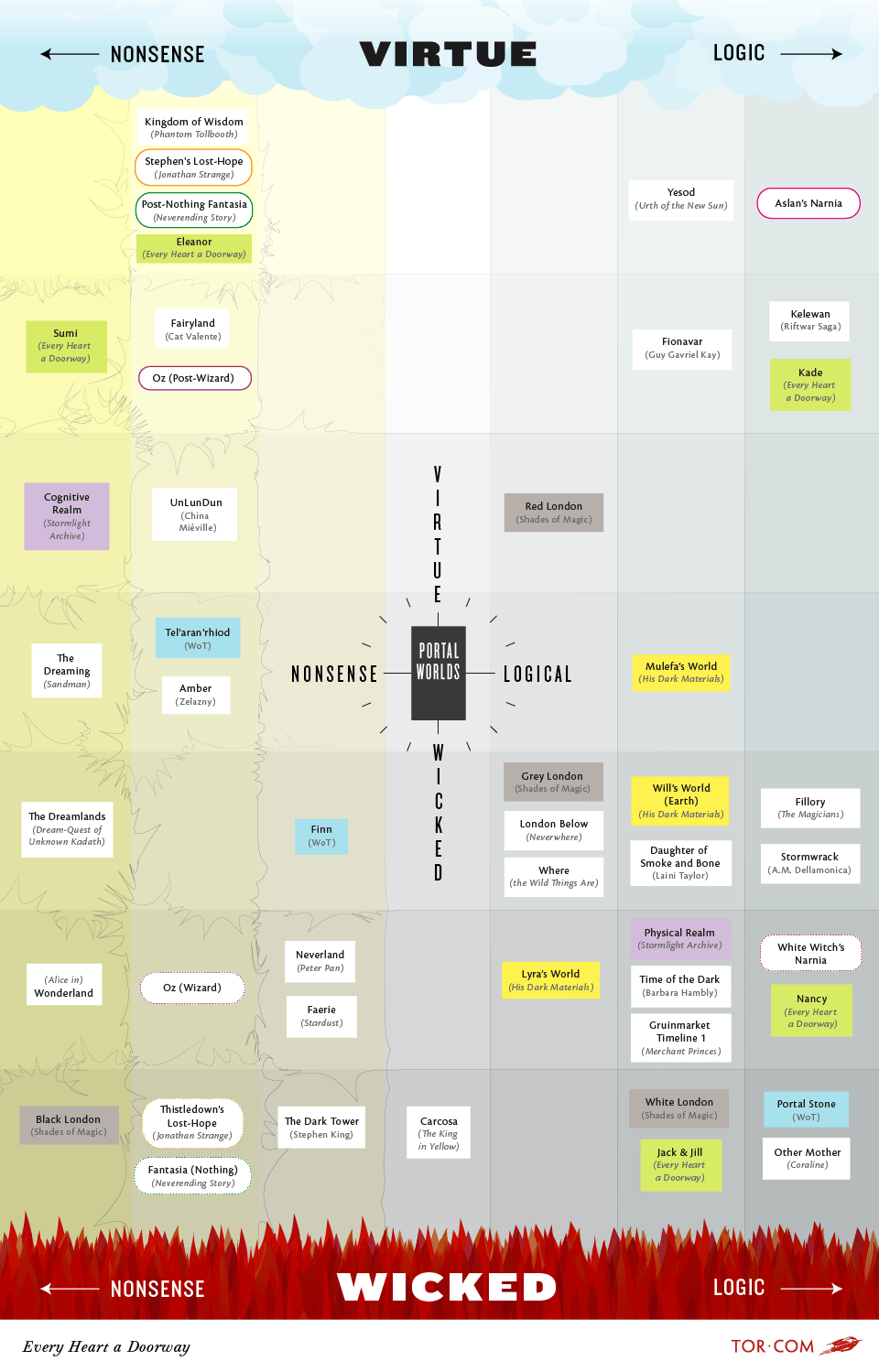
Hey You Have Narnia On There Twice
That’s because we discovered something really interesting when plotting out this portal world multiverse. Worlds move over time. They slide into Wickedness or correct into Virtue. Check it out:
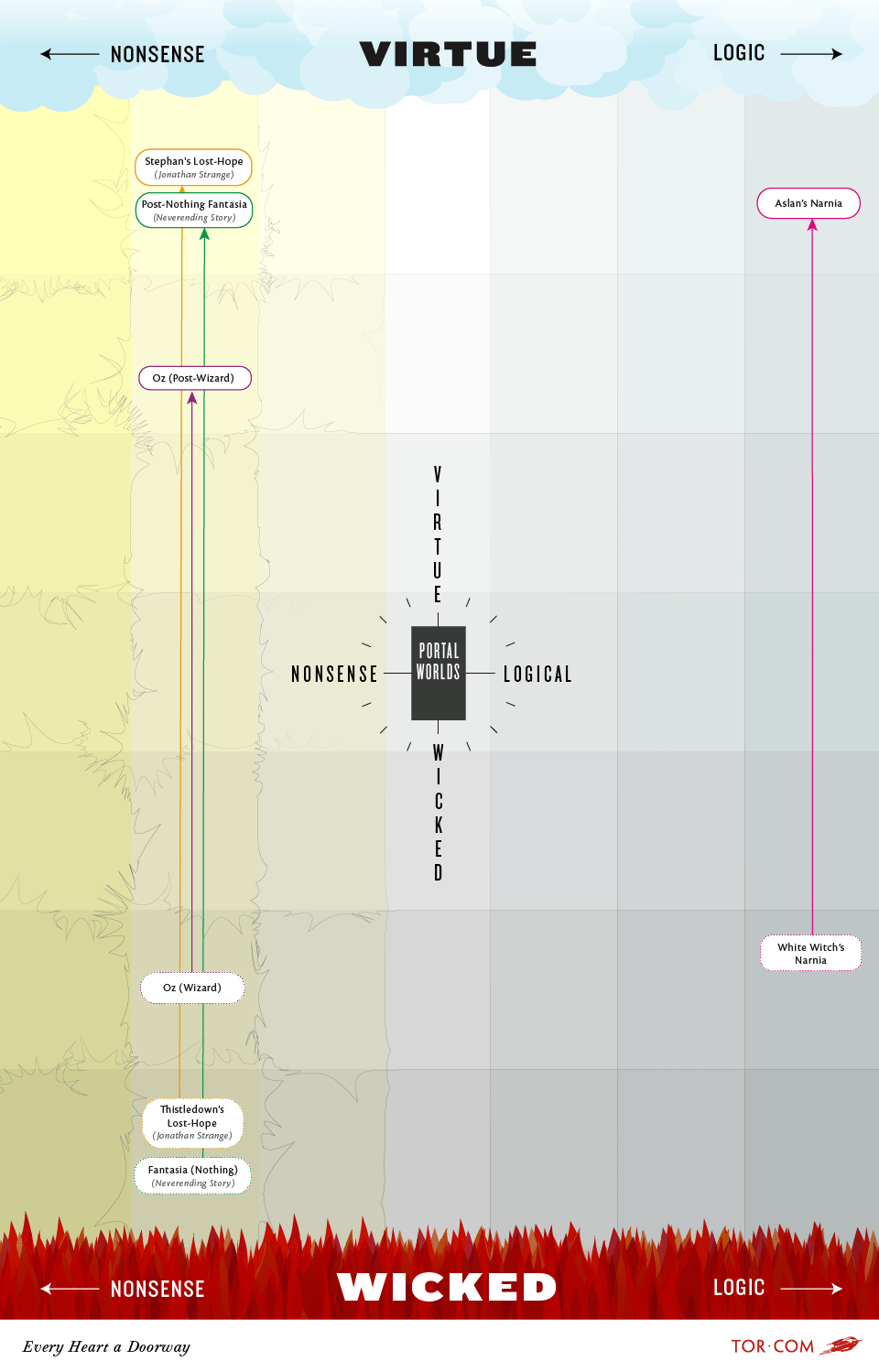
This means that worlds in a multiverse don’t just have spatial “x, y” coordinates, they have an additional “t” coordinate for the moment in time that you’re measuring them within! Magical worlds float, drift, move…they have vectors, velocity, they insist on being fourth-dimensional! Portal worlds–those magical places we are drawn into–fizz around us like soda pop.
Interestingly, the worlds we chose to depict on the grid only move along the y axis, between Virtue and Wickedness. We couldn’t think of a world that moved along the x axis, which suggests that the Aspects along that axis are more intrinsic to the definition of a world, comprising the core of their reality’s structure.
You’ll also notice that fictional worlds tend to group in certain quadrants and gradations. Worlds don’t really like being in that High Virtue / High Logic space, for example, but that’s probably because we don’t like telling stories about those kinds of worlds. Perfect, happy places where everything is tended to and everything makes sense are a goal, they’re not a story.
Hey You’re Missing…
Oh yes. We stuck to sci-fi/fantasy books mostly, because the multiverse is VAST and full of terrors and we couldn’t make an infographic big enough to contain everything we’ve read. (There are hundreds of portal worlds in comic books alone!)
Really, we can only show you the way.
It is time, perhaps, to chart your own journey through your favorite magical worlds…
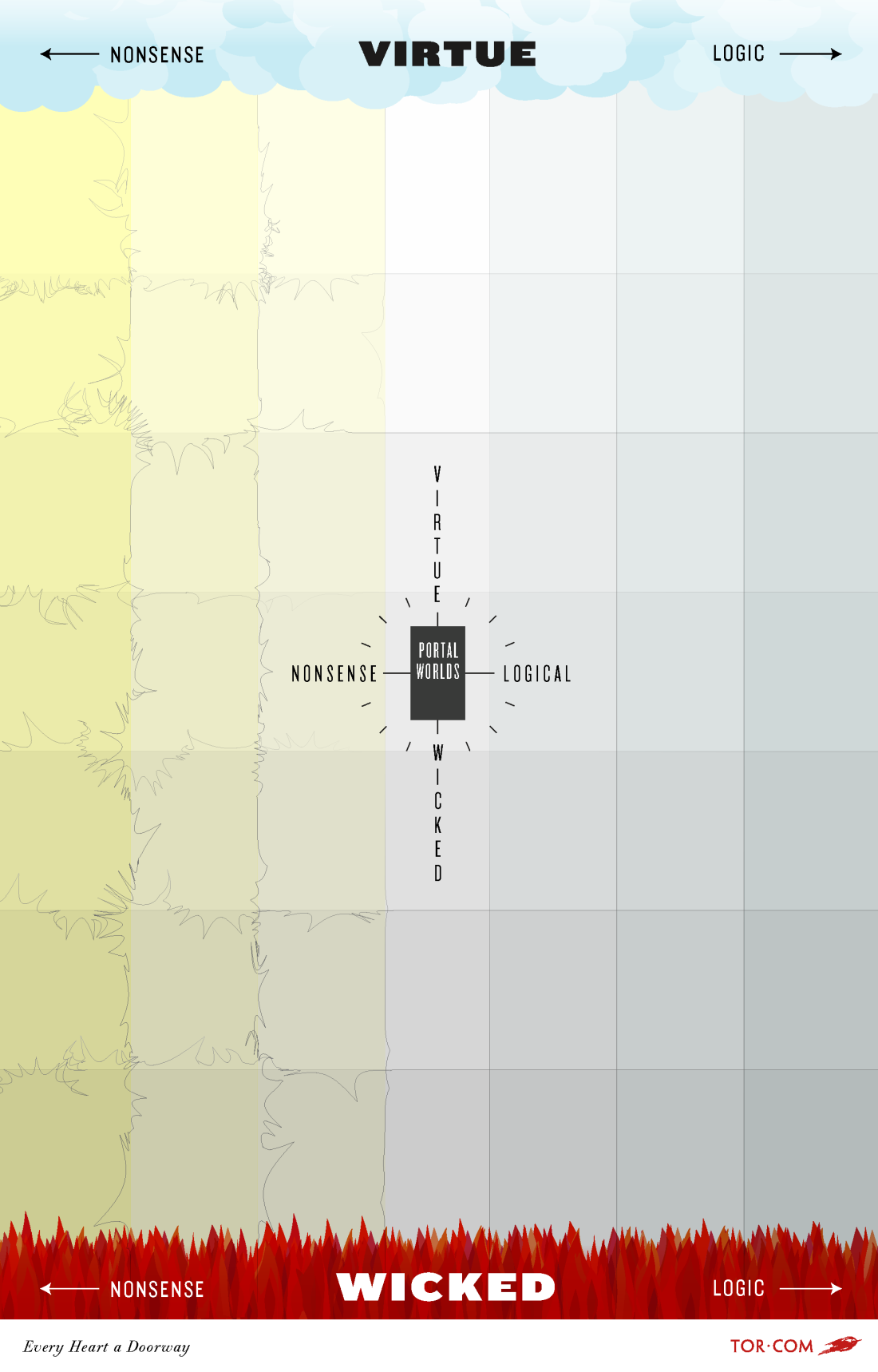
(A printable PDF version is available here.)
Chris Lough is the Content Director of Tor.com. Jamie Stafford-Hill is a Senior Designer at Tor Books. The map of portal worlds was created with the help of Tor.com staffers Bridget McGovern, Emmet Asher-Perrin, Natalie Zutter, Leah Schnelbach, Sarah Tolf, and Tor.com Publishing staff Carl Engle-Laird, Katharine Duckett, and Mordicai Knode. It was a true team effort, is what we’re trying to convey here.










